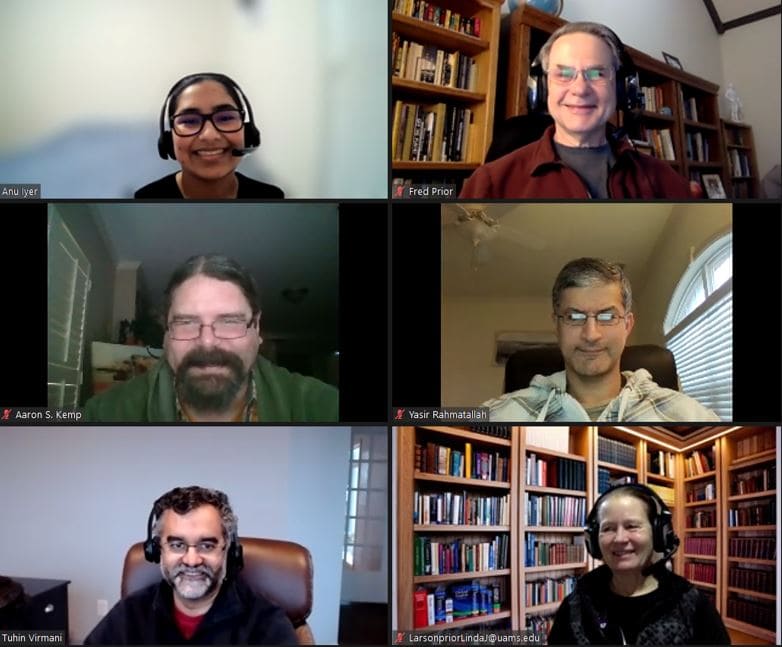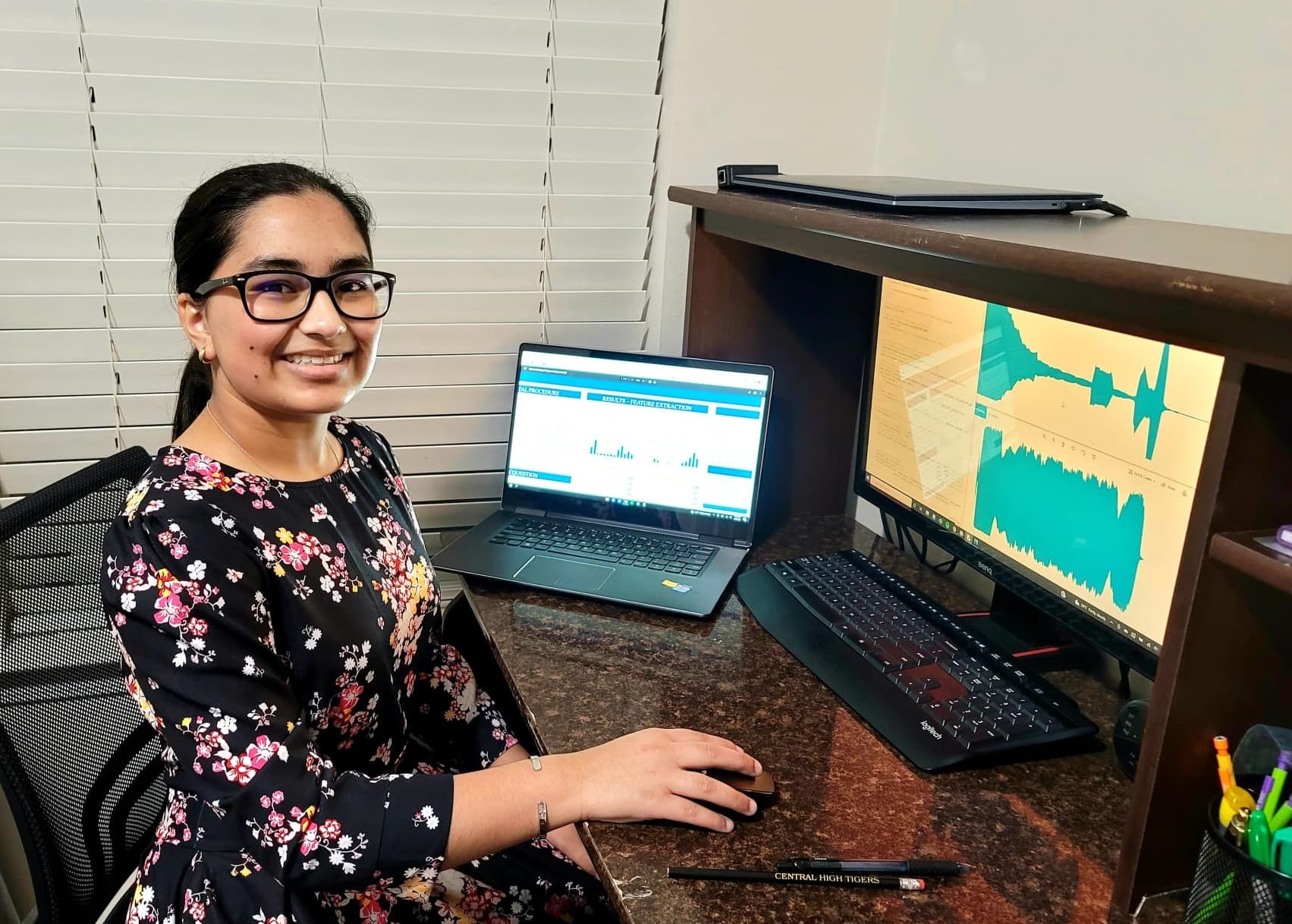Teenage Researcher Leads UAMS Parkinson’s Study Published in Scientific Reports
| LITTLE ROCK — Eighteen-year-old Anu Iyer, the recent Little Rock Central High School graduate and machine-learning sensation collaborating with a University of Arkansas for Medical Sciences (UAMS) research team, is the lead author on a publication in Scientific Reports, part of the Nature portfolio journals.
She was joined as co-first author by UAMS’ Aaron Kemp, MBA, a Ph.D. student in the College of Medicine Department of Biomedical Informatics.
The publication stems from Iyer’s work with Kemp and other UAMS researchers using machine learning to detect Parkinson’s disease on a project supported by a UAMS Translational Research Institute (TRI) Team Science Champion Award.
Now a student at Georgia Tech, Iyer has been mentored since high school by UAMS’ Fred Prior, Ph.D., distinguished professor and chair of the Department of Biomedical Informatics.
“Anu is exceptionally talented, and we are proud that she is part of our team,” Prior said. “Her work demonstrates the immense potential of machine learning and artificial intelligence for advancing medical diagnoses and treatment.”

Anu Iyer, top left, meets with the UAMS research team: Fred Prior, Ph.D., (top right); middle: Aaron Kemp, MBA, and Yasir Rahmatallah, Ph.D.; and bottom row: Tuhin Virmani, M.D., Ph.D., and Linda Larson-Prior, Ph.D.
He knew in 2022 that the then-high school student would be an ideal fit for the research team led by UAMS neurologist Tuhin Virmani, M.D., Ph.D., which was testing digital health innovations that may benefit rural patients with movement disorders such as Parkinson’s disease.
Virmani directs the UAMS Movement Disorders Clinic and the Huntington’s Disease Society of America Center of Excellence at UAMS.
Iyer was able to confirm the reliability of telephone voice recordings to detect Parkinson’s. The UAMS study team collected telephone voice samples from 50 people diagnosed with Parkinson’s and 50 healthy control participants, then applied machine learning classification with voice features related to phonation.
“We show the superiority of our deep learning model for the task of classifying people with Parkinson’s disease as distinct from healthy controls,” the paper concludes.
Iyer is conducting similar research at Georgia Tech and Emory University and will continue her UAMS collaborations. “I plan to continue working with UAMS and Dr. Prior and Dr. Virmani’s team, specifically with applying bioinformatics approaches to Parkinson’s,” she said.
In addition to Kemp, Prior and Virmani, the paper’s co-authors are:
- Aliyah Glover, research technician
- Lakshmi Pillai, M.S., research program manager, College of Medicine Department of Neurology
- Linda Larson-Prior, Ph.D., professor, College of Medicine Department of Neurobiology and Developmental Sciences and Department of Psychiatry
- Yasir Rahmatallah, Ph.D., assistant professor, Department of Biomedical Informatics
Rahmatallah also secured additional grants to support work on the project. These include a National Science Foundation EPSCoR grant (OIA-1946391) of $100,919 administered through the Data Analytics that are Robust and Trusted (DART) program; and a $25,000 Barton Intramural Grant from the UAMS College of Medicine.
TRI’s support for the project is made possible by a Clinical and Translational Science Award (CTSA) from the National Center for Advancing Translational Sciences at the National Institutes of Health, award UL1 TR003107.
UAMS is the state’s only health sciences university, with colleges of Medicine, Nursing, Pharmacy, Health Professions and Public Health; a graduate school; a hospital; a main campus in Little Rock; a Northwest Arkansas regional campus in Fayetteville; a statewide network of regional campuses; and eight institutes: the Winthrop P. Rockefeller Cancer Institute, Jackson T. Stephens Spine & Neurosciences Institute, Harvey & Bernice Jones Eye Institute, Psychiatric Research Institute, Donald W. Reynolds Institute on Aging, Translational Research Institute, Institute for Digital Health & Innovation and the Institute for Community Health Innovation. UAMS includes UAMS Health, a statewide health system that encompasses all of UAMS’ clinical enterprise. UAMS is the only adult Level 1 trauma center in the state. UAMS has 3,275 students, 890 medical residents and fellows, and five dental residents. It is the state’s largest public employer with more than 12,000 employees, including 1,200 physicians who provide care to patients at UAMS, its regional campuses, Arkansas Children’s, the VA Medical Center and Baptist Health. Visit www.uams.edu or uamshealth.com. Find us on Facebook, X (formerly Twitter), YouTube or Instagram.###
